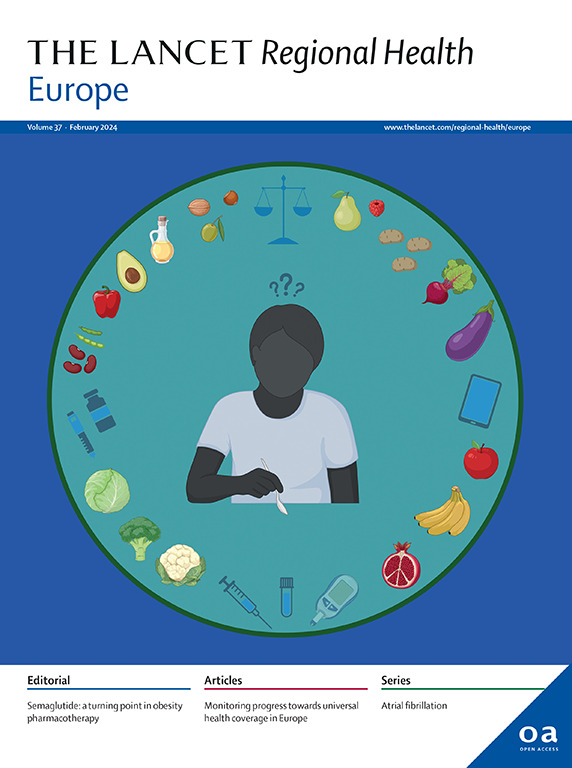长期慢性阻塞性肺病患者症状波动的生理、认知和社会诱因:强化纵向队列研究
IF 13.6
Q1 HEALTH CARE SCIENCES & SERVICES
引用次数: 0
摘要
背景 长期慢性阻塞性肺病患者体内和之间的症状波动已被广泛报道,但不同类型的活动和不同程度的劳累后症状的严重程度会有多大差异,以及症状和恢复的时间尚未被量化。我们的目的是利用生态学瞬间评估来描述症状波动的时间、严重程度和性质,以应对费力的体力、社交和认知活动。方法我们在长达 24 天的时间里,在诊所和社区环境中每 3 小时记录一次活动、费力程度和 8 种核心症状的严重程度。结果376名参与者(273名在诊所,103名在社区)提供了≥1周的测量数据,并表示同意。在各类活动后 30 分钟,所有症状的严重程度都有所升高。活动量的增加与症状严重程度的增加有关。体力消耗最大时,疲劳严重程度得分增加 1.8/10(95% CI:1.6-1.9),认知能力消耗最大时,疲劳严重程度得分增加 1.5(1.4-1.7)。有证据表明,3 小时后(0.3,0.2-0.5)或一天后(0.2,0.0-0.5)只有轻微的延迟疲劳。随着时间的推移,疲劳的严重程度会增加(1.4,1.0-1.7),认知功能障碍在周末会降低 0.2(0.1-0.3)。症状波动的明显模式支持更有针对性的自我管理。本文章由计算机程序翻译,如有差异,请以英文原文为准。
Physical, cognitive, and social triggers of symptom fluctuations in people living with long COVID: an intensive longitudinal cohort study
Background
Symptom fluctuations within and between individuals with long COVID are widely reported, but the extent to which severity varies following different types of activity and levels of exertion, and the timing of symptoms and recovery, have not previously been quantified. We aimed to characterise timing, severity, and nature of symptom fluctuations in response to effortful physical, social and cognitive activities, using Ecological Momentary Assessments.
Methods
We recorded activity, effort, and severity of 8 core symptoms every 3 h for up to 24 days, in cohorts from both clinic and community settings. Symptom severities were jointly modelled using autoregressive and moving average processes.
Findings
Consent was received from 376 participants providing ≥1 week's measurements (273 clinic-based, 103 community-based). Severity of all symptoms was elevated 30 min after all categories of activity. Increased effort was associated with increased symptom severity. Fatigue severity scores increased by 1.8/10 (95% CI: 1.6–1.9) following the highest physical exertions and by 1.5 (1.4–1.7) following cognitive efforts. There was evidence of only mild delayed fatigue 3 h (0.3, 0.2–0.5) or one day later (0.2, 0.0– 0.5). Fatigue severity increased as the day progressed (1.4, 1.0–1.7), and cognitive dysfunction was 0.2 lower at weekends (0.1–0.3).
Interpretation
Cognitive, social, self-care and physical activities all triggered increased severity across every symptom, consistent with associated common pathways as potential therapeutic targets. Clear patterns of symptom fluctuations emerged that support more targeted self-management.
Funding
National Institute for Health and Care Research.
求助全文
通过发布文献求助,成功后即可免费获取论文全文。
去求助
来源期刊

Lancet Regional Health-Europe
Multiple-
CiteScore
19.90
自引率
1.40%
发文量
260
审稿时长
9 weeks
期刊介绍:
The Lancet Regional Health – Europe, a gold open access journal, is part of The Lancet's global effort to promote healthcare quality and accessibility worldwide. It focuses on advancing clinical practice and health policy in the European region to enhance health outcomes. The journal publishes high-quality original research advocating changes in clinical practice and health policy. It also includes reviews, commentaries, and opinion pieces on regional health topics, such as infection and disease prevention, healthy aging, and reducing health disparities.
 求助内容:
求助内容: 应助结果提醒方式:
应助结果提醒方式:


